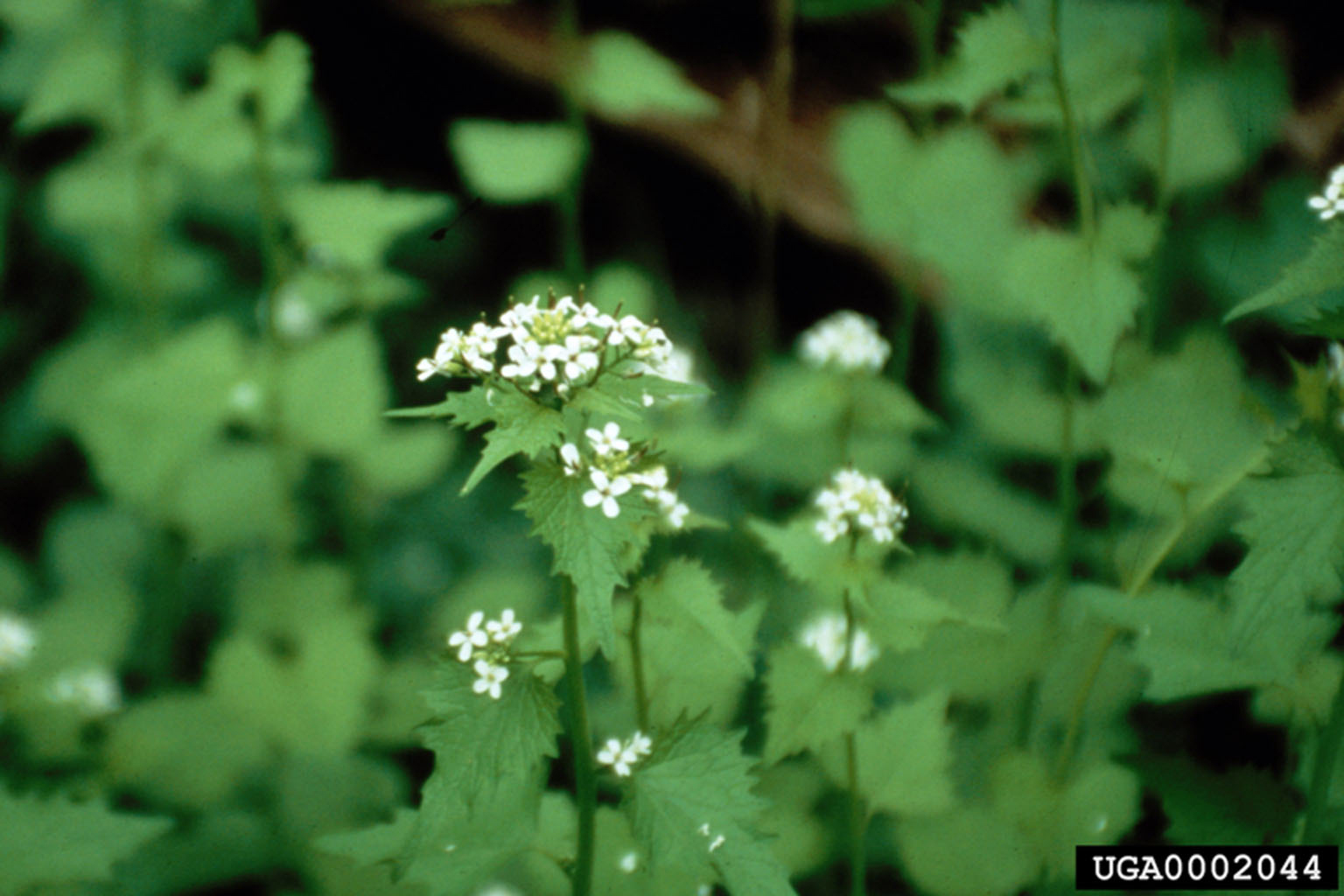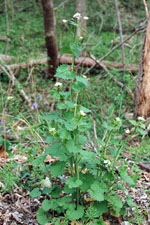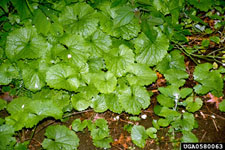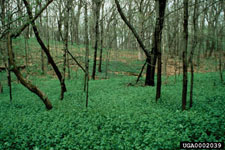Athens County Invasive Exotics Control Program
Garlic mustard, Alliaria petiolaria




All images on this page are courtesy of the US Forestry Service, USDA
Eradication tips:
Pull in early to mid-April, and then again in mid-May, and pull second-year plants first, which are starting to form a flowering spike. If it's pulled before seed pods are set, then it may be composted, or hung over branches to dry out or left on a roadway or trail surface. However, if the seed pods are already set, then the plant should be bagged for the landfill or burned. When pulling, grasp the plant as far down as possible, preferable at the top of the roots, since they have a tendency to break off just above the roots and then the roots grow a new plant. It's important to pull again in mid- to late May, because small plants often send up flowering stalks later than the larger plants. It may also be pulled at any time during the winter, when it's easy to spot when there's no snow on the ground, because it is very brightly evergreen.